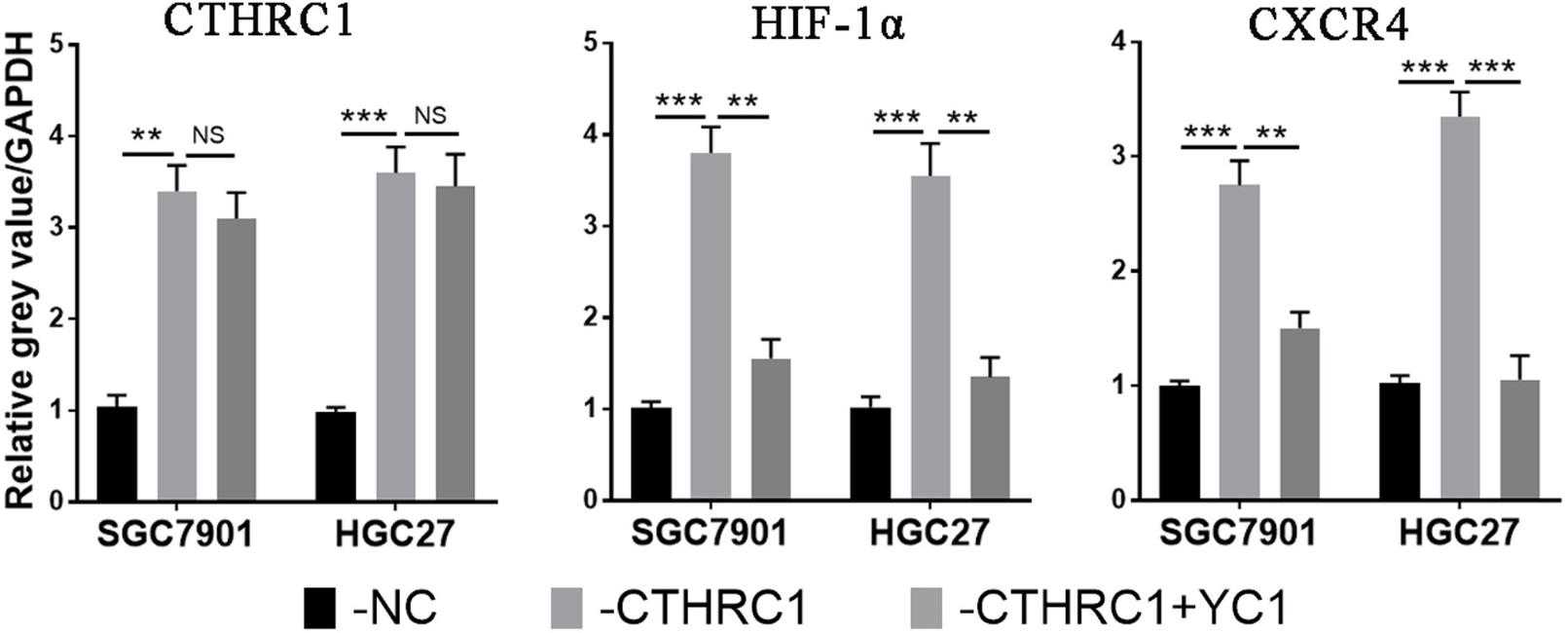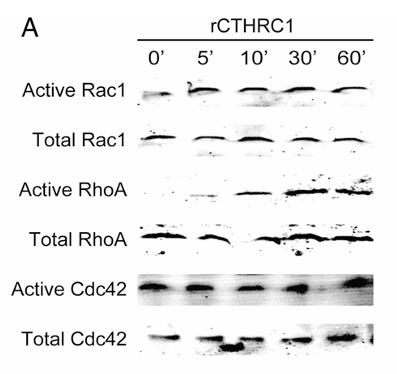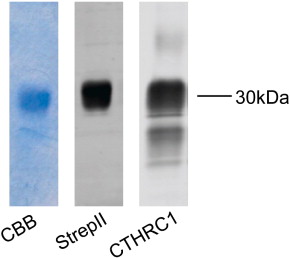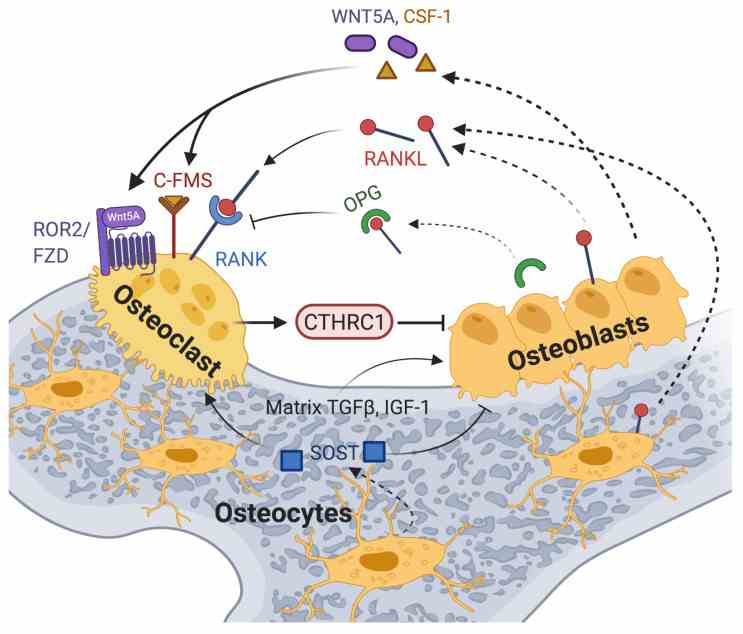Recombinant Human CTHRC1 Protein, His-tagged
| Cat.No. : | CTHRC1-5254H |
| Product Overview : | Recombinant human MMP11 protein (31-243 aa) was expressed in E. coli with His-tag. |
- Specification
- Gene Information
- Related Products
- Case Study
- Application
- Download
| Species : | Human |
| Source : | E.coli |
| Tag : | His |
| Protein Length : | 31-243 a.a. |
| Form : | 20mM NaPhosphate pH 8, 0.5M NaCl, 0.1M Arginina, 1mM b-ME, 250mM imidazol |
| Molecular Mass : | 24.03 kDa |
| Purity : | >95% |
| Applications : | ELISA, WB, Antibody Production, Protein array |
| Storage : | Lyophilized. Prior to reconstitution, store the lyophilized protein at 2-8 centigrade. After reconstitution, store in working aliquots at -80 centigrade. |
| Gene Name | CTHRC1 collagen triple helix repeat containing 1 [ Homo sapiens ] |
| Official Symbol | CTHRC1 |
| Synonyms | Cyclosporin A binding protein, CYPA, CYPH, Peptidyl prolyl cis-trans isomerase A, Peptidyl-prolyl isomerase A, PPIase, Rotamase |
| Gene ID | 115908 |
| mRNA Refseq | NM_001256099 |
| Protein Refseq | NP_001243028 |
| MIM | 610635 |
| UniProt ID | Q96CG8 |
| ◆ Recombinant Proteins | ||
| CTHRC1-3570H | Recombinant Human CTHRC1 protein, His-tagged | +Inquiry |
| CTHRC1-5241H | Recombinant Human CTHRC1 Protein, MBP/His-tagged | +Inquiry |
| Cthrc1-1134R | Recombinant Rat Cthrc1 Protein, His-tagged | +Inquiry |
| CTHRC1-1738H | Recombinant Human CTHRC1 Protein (Ser31-Lys243), N-His tagged | +Inquiry |
| CTHRC1-400HFL | Recombinant Full Length Human CTHRC1 Protein, C-Flag-tagged | +Inquiry |
| ◆ Cell & Tissue Lysates | ||
| CTHRC1-2448HCL | Recombinant Human CTHRC1 cell lysate | +Inquiry |
Case 1: Ding X, et al. Biomed Pharmacother. 2020
Metastasis is the primary cause of gastric cancer (GC) mortality, and while CTHRC1 is linked to tumor growth and spread, its specific role in GC metastasis is not completely understood. This study, based on TCGA and GEO data, found high CTHRC1 expression in GC tumor tissues correlated with poorer outcomes. CTHRC1 was shown to enhance GC cell migration and invasion, an effect reversed by CXCR4 silencing. CTHRC1 also elevated CXCR4 levels by increasing HIF-1α expression, thereby promoting cell migration and invasion. Inhibiting HIF-1α reduced CXCR4 levels and cell invasiveness in GC.

Fig1. CTHRC1 expression confirmed by western blot.

Fig2. The intensity of CTHRC1, HIF-1α and CXCR4 normalized by negative control.
Case 2: Ma MZ, et al. Neoplasia. 2014
Gastrointestinal stromal tumors (GISTs) are the most common mesenchymal tumors in the GI tract, with malignancy levels ranging from curable to highly malignant. Metastasis and recurrence are the leading causes of death in GIST patients. The investigation into CTHRC1's role in GIST revealed that its expression increased with higher NIH risk grades and was associated with disease-free and overall survival in 412 GIST patients. In vitro studies indicated that CTHRC1 enhanced primary GIST cells' migration and invasion. It activated the noncanonical Wnt/PCP-Rho signaling pathway, as shown by luciferase reporter and pull-down assays, and suppressed canonical Wnt signaling. The migration-promoting effect of CTHRC1 was counteracted by a Wnt5a neutralizing antibody and Rac1 or ROCK inhibitors. These findings suggest that CTHRC1 could be a novel predictor of recurrence risk and prognosis in GIST patients post-surgery and may be crucial for GIST progression. As CTHRC1 promotes GIST cell migration and invasion via the Wnt/PCP-Rho pathway, this axis could be a potential therapeutic target for GIST treatment.

Fig1. Analysis of the active and total RhoA,Rac1 and Cdc42 in primary GIST cells treated with rCTHRC1 protein by pull-down assay.

Fig2. Verification of affinity purified CTHRC1 protein by Coomassie Brilliant Blue staining and Western blotting.
Recombinant Human CTHRC1 Protein is a secreted protein with multiple biological functions and potential applications in disease therapy. CTHRC1 plays an important role in vascular remodeling, osteoblast formation, wound repair, and tumor development. As a regulator, CTHRC1 is involved in the pathological processes of tumors by promoting cell migration and angiogenesis, and plays a role in pannus formation in rheumatoid arthritis. It mainly acts through the Wnt signaling pathway, which plays a key regulatory role in the occurrence and development of a variety of diseases.
In practice, CTHRC1 expression levels have been found to be abnormal in a variety of human tumors, including breast, colon, pancreatic, lung, stomach, and liver cancers. The high expression of CTHRC1 is positively correlated with the invasion and metastasis of tumor cells, and it promotes the migration and invasion of tumor cells by activating Wnt/PCP signaling pathway. In addition, CTHRC1 expression in hepatocellular carcinoma was correlated with tumor size, vascular invasion, TNM stage, and Barcelona HCC clinical stage, and was an independent factor affecting the overall survival of patients.
CTHRC1 also plays a role in regulating skeletal muscle disease, glucose metabolism, and bone formation. In the peripheral nervous system, CTHRC1 has an effect on neural tube opening, possibly by modulating the PCP signaling pathway. In oncology, CTHRC1 is considered a potential therapeutic target for a variety of cancers, including hepatocellular carcinoma, stomach cancer, colorectal cancer, and non-small cell lung cancer.
Overall, the Recombinant Human CTHRC1 Protein plays a multifaceted role in physiological and pathological processes, and its role in tumor development has made it a hot topic in cancer treatment research.

Fig1. A model of CTHRC1 action in osteoclast–osteoblast crosstalk is shown, highlighting the effects of some of the key players involved. (Askhat Myngbay, 2021)
Not For Human Consumption!
Inquiry
- Reviews
- Q&As
Ask a Question for All CTHRC1 Products
Required fields are marked with *
My Review for All CTHRC1 Products
Required fields are marked with *
Inquiry Basket


